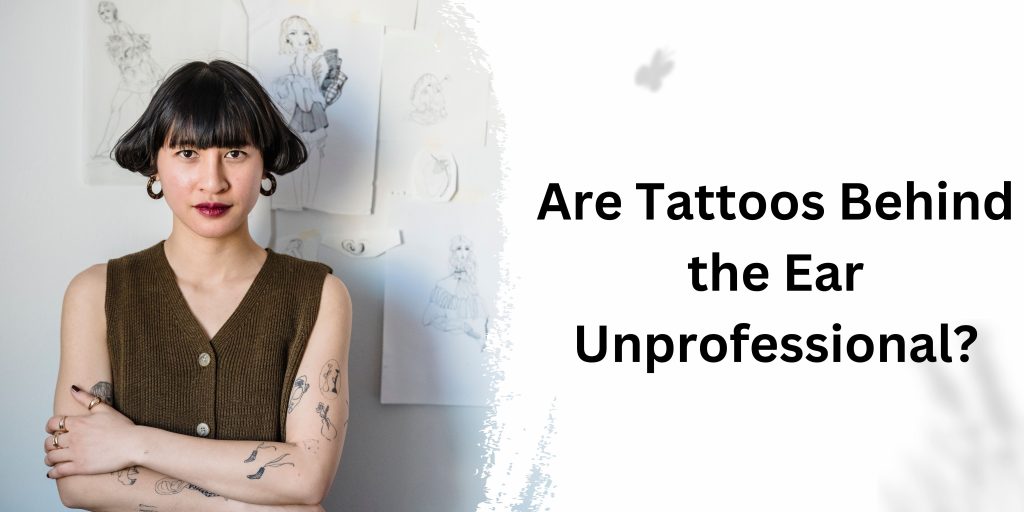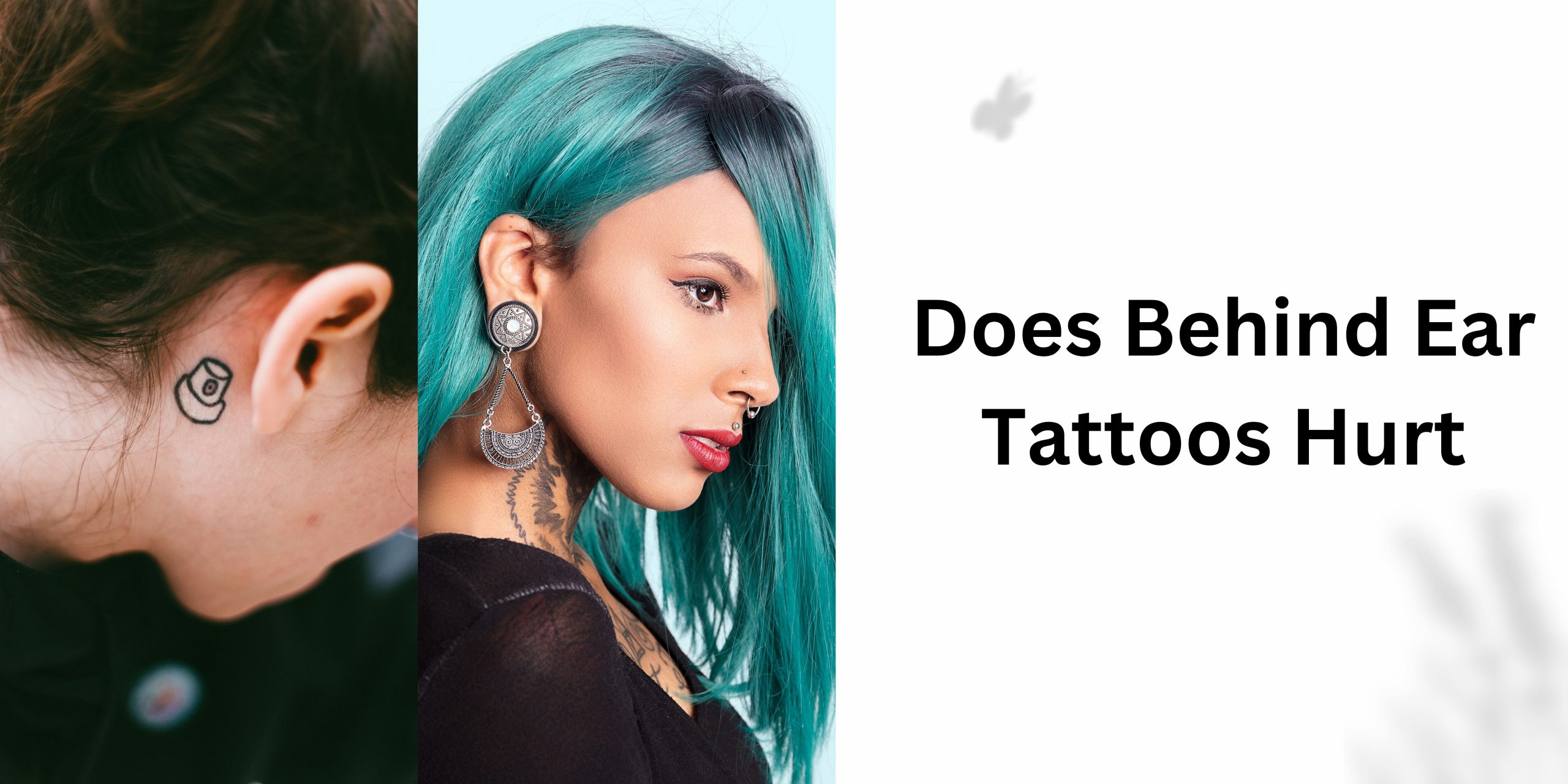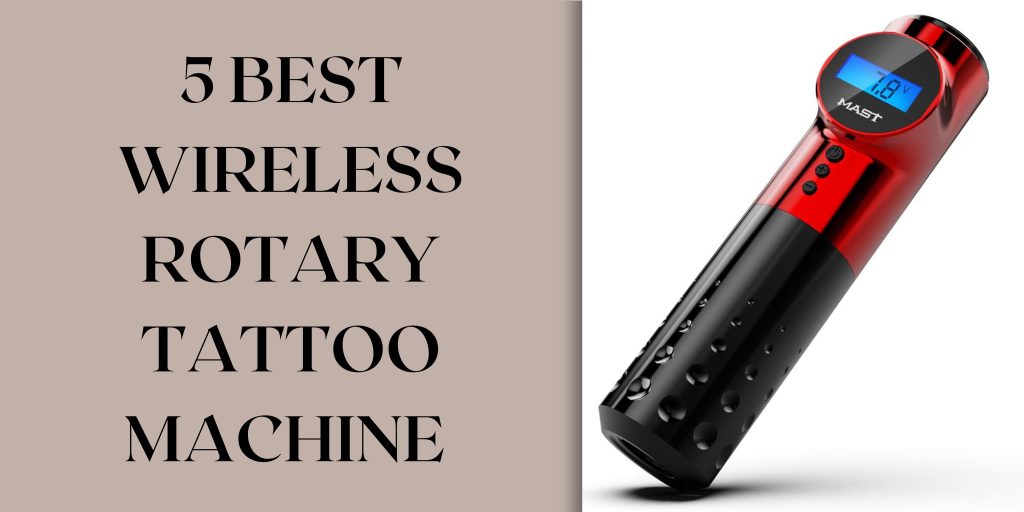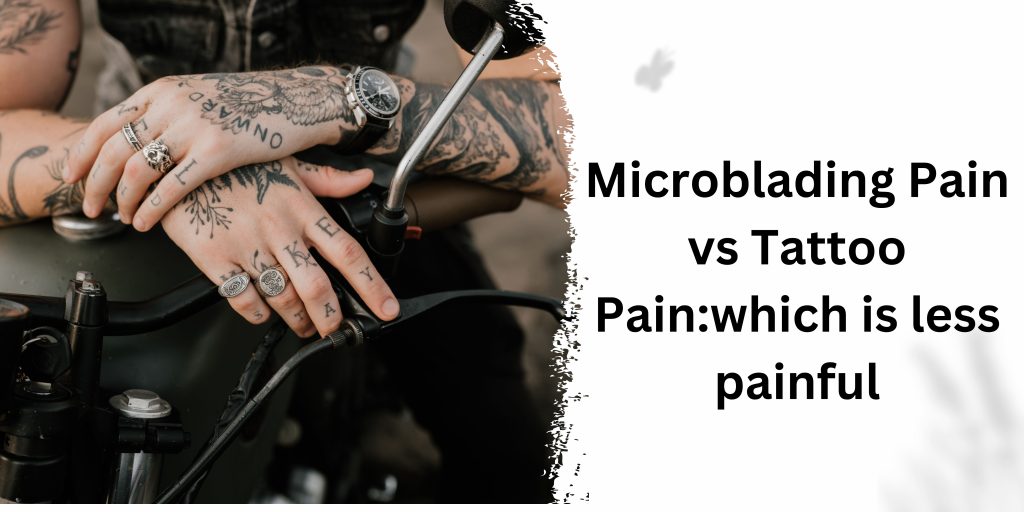Tattoos have long been regarded as a form of self-expression, each inked masterpiece telling a unique story. And among the myriad choices for body art, the behind-the-ear tattoo stands out as an intimate and often discreet canvas. But a burning question echoes through the tattooing community: does behind ear tattoos hurt?
Why do some people find them extra painful?
Imagine this – a buzzing needle dancing over your skin, creating an indelible mark that is both a testament to your individuality and, for some, a measure of pain tolerance. The behind-the-ear region, with its delicate skin and proximity to bone, is notorious for its sensitivity. When the needle punctures this area, nerve endings awaken, amplifying the sensation. It’s not just about the ink; it’s about dancing on the fine line between pleasure and pain.
How long does the pain last?
Now that we’ve acknowledged the potential for pain, the next query is, how long does it linger? Pain is, after all, a transient companion on this inked journey. Typically, behind-the-ear tattoos elicit discomfort during the process, with intensity varying from person to person. However, the sting is short-lived. In most cases, the acute discomfort subsides within a few hours to a couple of days, making way for the pride and joy of your new body art.
Pain Relief Tips
- Numbing Creams:
- Apply an approved numbing cream containing lidocaine to the tattoo area before the session begins.
- Consult with your tattoo artist to ensure compatibility with the inking process.
- Mindful Breathing:
- Practice deep and slow breathing during the tattooing process to help relax your body and alleviate tension.
- Focus on your breath to distract yourself from the immediate discomfort.
- Choose the Right Time:
- Opt for tattoo sessions during times when you are naturally more relaxed, reducing overall stress levels.
- Avoid scheduling appointments during periods of high personal or professional stress.
- Pain Relievers (As Advised):
- Consult with your healthcare provider before considering over-the-counter pain relievers.
- If approved, take a recommended dose of pain relievers before the session to preemptively dull pain.
- Stay Hydrated:
- Drink plenty of water in the hours leading up to your tattoo appointment.
- Hydration can contribute to overall well-being and may help mitigate discomfort.
- Choose a Skilled Artist:
- Select an experienced tattoo artist who understands the nuances of working in sensitive areas.
- A skilled hand can make the process more efficient, minimizing overall discomfort.
- Mind Over Matter:
- Cultivate a positive mindset about the experience.
- Remind yourself of the significance of the tattoo and the pride you’ll feel once it’s completed.
- Breaks if Needed:
- Don’t hesitate to request short breaks during the session if you need a moment to regroup.
- Communicate openly with your tattoo artist to ensure a comfortable experience.
Read More: What is the Best Laser for Tattoo Removal?
Tattoos Behind the Ear: Pros and Cons
Now that we’ve unravelled the enigma of pain, let’s explore the pros and cons of adorning this intimate canvas.
Pros:
- Subtle Elegance: Behind-the-ear tattoos exude a certain understated charm, visible only to those you choose to share it with.
- Easy to Hide: Need to keep it under wraps? A strategic hairstyle or a well-placed hat can keep your ink a secret.
- Versatile Designs: Despite the limited space, the behind-the-ear area accommodates diverse designs, from small symbols to intricate patterns.
Cons:
- Pain Factor: As discussed, the pain during the process can be more intense compared to other body parts.
- Fading Potential: Due to constant exposure to the elements, tattoos behind the ear may fade faster than those on less exposed areas.
Read More: How bad do nipple tattoos hurt
Are Tattoos Behind the Ear Unprofessional?
The age-old debate – are tattoos professional or unprofessional? The truth is, that attitudes are changing, and tattoos are increasingly accepted in various professional spheres. However, the perception of professionalism can still be subjective. Behind-the-ear tattoos, being easily concealable, are less likely to raise eyebrows in conservative workplaces. Ultimately, it’s essential to gauge the culture of your workplace and industry before making a decision.

Behind the Ear Tattoo Aftercare
Congratulations, you’ve endured the needle’s dance and emerged with a stunning behind-the-ear tattoo! Now, let’s talk aftercare. It’s crucial to treat your new ink with the utmost care to ensure optimal healing and longevity.
- Gentle Cleaning: Use a mild, fragrance-free soap to clean the tattooed area. Gently pat it dry with a clean cloth.
- Moisturize: Apply a thin layer of tattoo-friendly moisturizer to keep the skin hydrated.
- Avoid Sun Exposure: Shield your artwork from direct sunlight, as UV rays can accelerate fading.
- No Scratching: Resist the urge to scratch, as this can disrupt the healing process and lead to infections.
Do Behind the Ear Tattoos Fade?
The reality is, that all tattoos fade to some extent over time. However, the behind-the-ear location poses unique challenges. Constant exposure to the elements, hair friction, and facial movements can contribute to faster fading. But fear not, diligent aftercare and sun protection can significantly extend the vibrancy of your behind-the-ear masterpiece.
Read More: Microblading Pain vs Tattoo Pain
Summary
the behind-the-ear tattoo emerges as a canvas of both beauty and potential pain. The decision to ink this delicate space comes with its considerations, from the transient discomfort to the longevity of your chosen design. As the needle weaves its magic, the pain becomes a rite of passage, a reminder that beauty often demands a bit of sacrifice.







